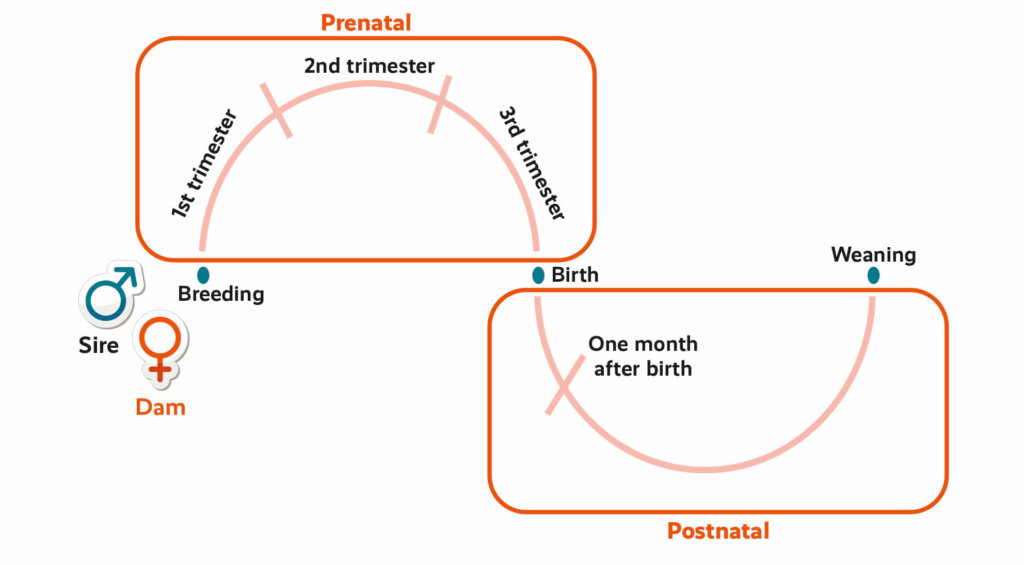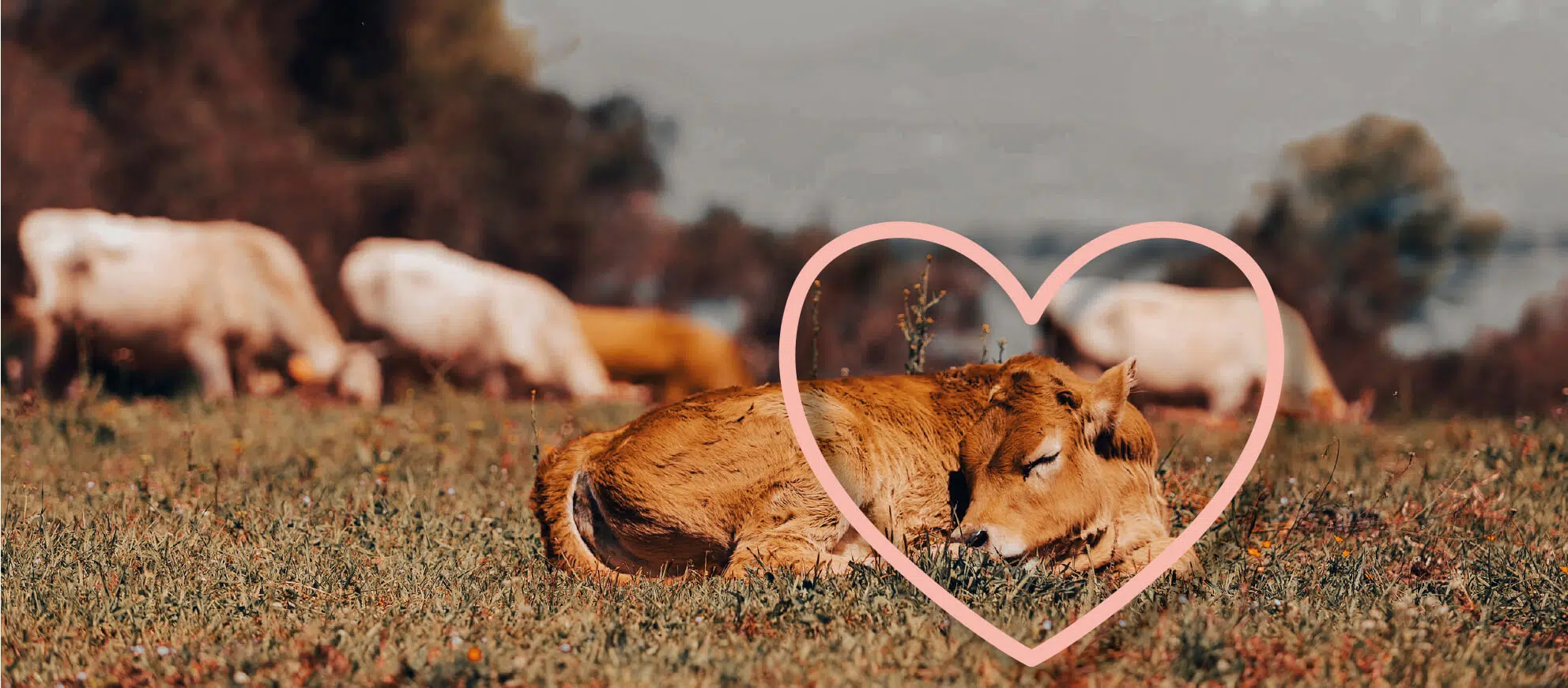Calf health has a considerable effect on the economic sustainability of beef production systems, with greater calf losses and disease prevalence resulting in unnecessary costs to the production system. Calf health is not solely influenced by factors when the calf makes its arrival; however, it is rather a journey that begins at conception, is carried through weaning, and influences the animal’s lifetime production ability.

Prenatal care
Breeding
Fertility, fertility, fertility! Fertility is the most important buzzword associated with your breeding stock. Before we can discuss calf health, we need to ensure that a calf is conceived and born. Both the sire and the dam play a role in the successful conception of a foetus, with calf losses not only occurring at birth, but in utero as well. In addition, the breed of the sire and the dam may influence the calf’s resilience to disease, and health status. By implementing a cross-breeding programme on-farm, producers can benefit from the hybrid vigour realised in the subsequent generation, as these animals generally have an elevated disease resistance.
Breeding bulls need to be fit, fertile, and disease-free. Venereal diseases carried by breeding bulls can be transferred to the cow, leading to embryonic or calf losses. To prevent the spread and transmission of these diseases, a biosecurity programme should be implemented on-farm. Bulls should be tested for venereal diseases before each breeding season and the breeding herd should be kept closed. In addition, cow fertility is frequently emphasised as the most important, but a bull has the greatest impact on herd fertility due to the number of females he needs to service. In order to produce sufficient quantities of high-quality sperm, bulls need to receive adequate levels of trace minerals and nutrients prior to breeding, with zinc being one of the most important trace minerals affecting bull fertility.
One of the key determinants of calf health lies within cow health. It is essential that breeding females are in a good condition at breeding, and that this condition is maintained during gestation. Poor cow nutrition has a run-on effect during gestation, leading to the birth of weak calves, who will struggle to perform and resist diseases throughout their lives. The body condition score of a female animal should be at least three at breeding and her diet should contain adequate nutrients such as protein, energy, trace minerals, and vitamins. Trace minerals such as zinc, manganese, iron, and copper play a pivotal role in dam fertility, with deficiencies in these leading to reduced conception rates. The health status of the cow may affect her ability to carry the calf to full term and her future calf’s health. A well-known disease resulting in embryonic losses in cows is brucellosis, which reduces the subsequent calf crop.
Gestation
Gestation consists of three separate phases, each playing an important role in the future calf’s health and production. The greatest embryonic losses transpire during the first trimester, which may be due to cows or heifers being exposed to stressful events or nutritional inadequacies. Gestational supplementation should not only be regarded as an investment in your cows, but in the future health status and performance of your calves too, as the calf’s immune system starts to develop during gestation. Nutritional inadequacies become of great importance in calf health and development during the third trimester, as this is the phase when the calf grows most rapidly.
Birth
Losses may also occur during the birthing process. A dam experiencing dystocia may potentially result in the loss of the calf (due to anoxia) and even the dam. In addition, calf health may also be negatively affected by dystocia. Research has shown that calves born to mothers experiencing dystocia have a reduced ability to regulate their body temperature, which may be aggravated by unfavourable weather conditions. Another factor – that will influence the lifetime immunity of a calf is its colostrum intake at birth. Calves obtain maternal immunoglobulins from colostrum and inadequate colostrum intake within the first six to eight hours of birth may set the calf off on a bad hoof regarding its immune status. The dam’s nutrition during the third trimester will significantly influence the quality and quantity of colostrum she produces, thus stressing the importance of adequate nutritional supplementation during this phase of gestation. In addition, if a dam has inadequate immune responses to vaccination during her lifetime, the immunoglobulin content of her colostrum will be adversely affected. Trace minerals play a role in the efficacy of immunisations due to their involvement in the immune system of animals.
Postnatal care
One month after birth
The environment that a calf is exposed to after birth will directly influence its health status. The pathogen load can build up in a calving camp, which will negatively influence the health status of a newborn calf. The greatest calf losses within this period are caused by diarrhoea. Calves born later in the calving season are generally exposed to a greater pathogen load, owing to the disease build-up in the camp. Producers can reduce the pathogen load calves are exposed to by having alternative calving camps between subsequent breeding seasons.
The young stock on-farm are the most vulnerable and susceptible to new diseases. It is important, therefore, to prevent the introduction of new diseases by implementing biosecurity control points in calving camps and limiting the number of visitors and vehicles that have access to the calving camps. Not only will this reduce the risk of disease transmission, but it will also reduce the stress calves and cows experience.
Predators form part of the environment calves are exposed to and bring about their own unique challenges to calf health and may even contribute to calf losses. In addition, adverse weather events such as cold spells or heat waves may negatively affect calf health. Some form of shelter in calving camps is essential, should such weather transpire.
Weaning
At weaning, immunisations become important for the future health and productivity of the animal. For replacement heifers, adequate trace mineral nutrition will lead to improved immunisation responses, ensuring the health and viability of their future offspring. It is important to keep in mind that weaning is a stressful event for both dam and calf, which may affect the dam’s condition, her subsequent breeding season, and the calf’s immune status.
The big picture of calf health
Our cows and heifers are the gateway to improved calf health and production. Implementation of the correct strategies from breeding to weaning will lead to stronger, healthier calves that have elevated production abilities.
Download the full article in PDF format here, as published in Volume 12, Issue 4 of Red Meat/Rooivleis.
Ruminant researcher










